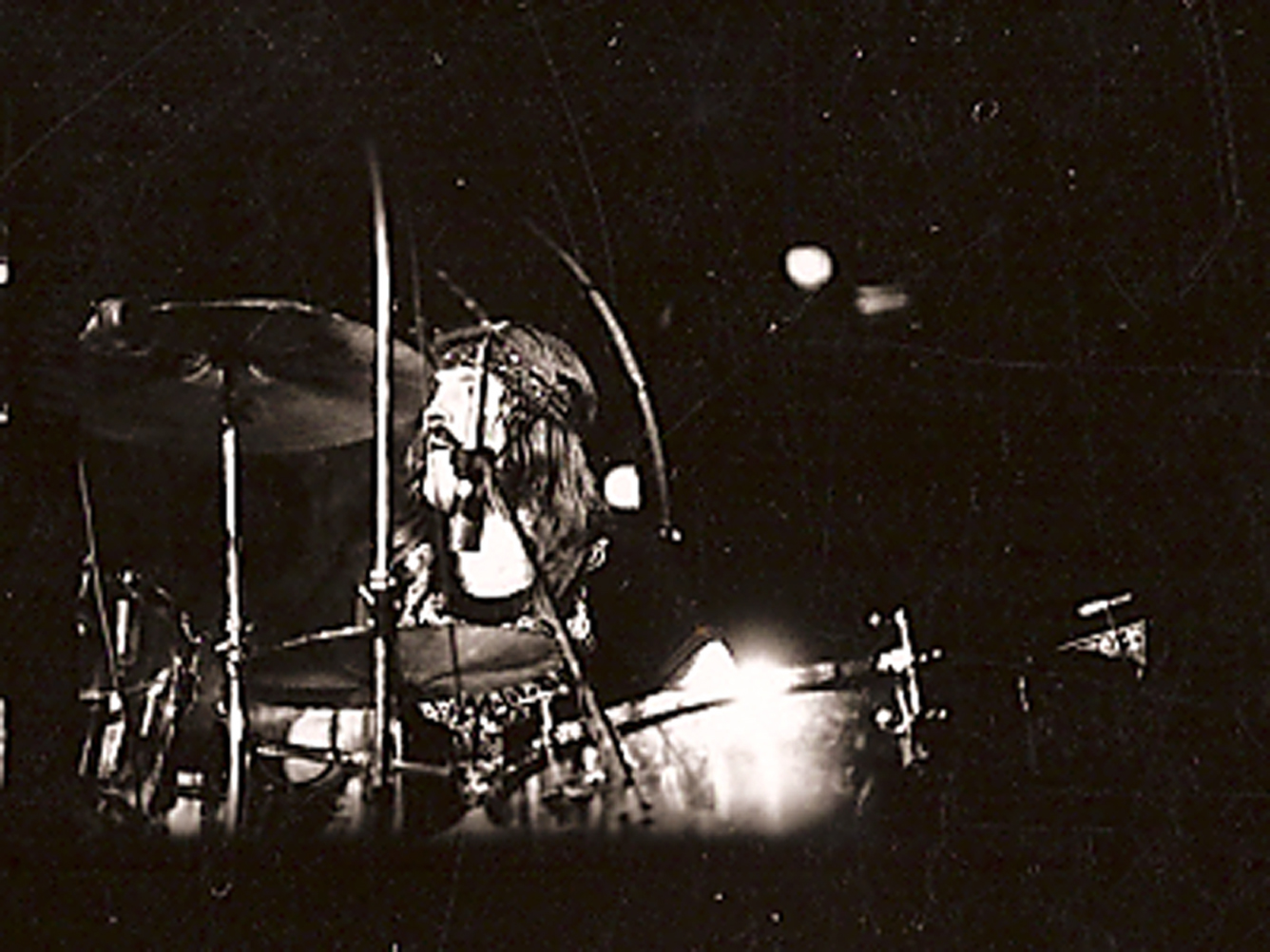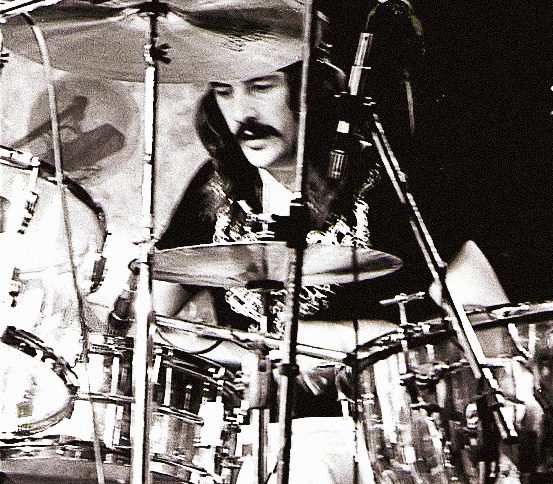“When the Levee Breaks,” written about the Great Mississippi Flood of 1927, set in motion decades of musical inspiration. The standard remained nestled solidly in the blues canon until 1970 when Led Zeppelin found its muse in the number. The English quartet reinvented the song as a riff-fest with a head-bobbing lurch. John Bonham’s classic beat appears in myriad forms—from Enigma and J. Cole to Dr. Dre and Aphex Twin. Explore how a cracked levee provided the echo-laden foundation for one of the most revered drum recordings ever. Then, learn to recreate this model of economical drumming using V-Drums.
The Original Storytellers
In 1929, Kansas Joe McCoy and Memphis Minnie recorded “When the Levee Breaks” for Columbia Records. Although McCoy received the credit, Minnie wrote the lyrics, speaking from the perspective of a man who lost everything in the devastating natural disaster. “When the Levee Breaks” became a standout on Led Zeppelin’s untitled fourth album. Even on a record boasting “Stairway to Heaven,” “Black Dog,” and “Rock and Roll,” the album closer is a defining moment in the group’s catalog.
Captured in the lobby of Headley Grange—a historical building in Hampshire, England—the spacious, heavily compressed drum sound of “When the Levee Breaks” is as crucial to the song’s legacy as its playing specifics. The unique sonic treatment and Bonham’s remarkable feel make the groove a continual creative flash point for producers and artists alike.
A Sample Favorite
“When the Levee Breaks” is seven minutes and eight seconds of bluesy bombast. Still, it’s the first two bars of solo drumming which remain one of the most sampled beats of the modern era. Bonham’s groove has a life of its own. Its rhythmic magic transcends genre; Beastie Boys, Eminem, Björk, and Massive Attack have all utilized the beat.
What we hear first is a kick drum placed perfectly in space. Next, its echo trails behind, creating an auditory afterimage. This groundbreaking sound came from the reverberation of two microphones hanging in the stairwell. Led Zeppelin guitarist Jimmy Page and producer Andy Johns coupled the natural room reverb with effects, including an analog echo machine.
"Its rhythmic magic transcends genre; Beastie Boys, Eminem, Björk, and Massive Attack have all utilized the beat."
Building a Foundation
Throughout “When the Levee Breaks,” Bonham returns to the simple pattern repeatedly. It provides a foundation for the droning slide guitar, dripping wet harmonica, and churning bass. During the lengthy track, the kick drum placement is impeccable, evidence of the consistency with which Bonham played.
The hi-hat pattern showcases the drummer’s deep swing in all its swishing glory. If there is any question as to why Bonham remains rock’s perennial favorite, the answer lies in this performance. The accents create a rise and fall that elevates the straightforward pattern of the kick and snare.

Interconnected Parts
While the opening beats are the most famous, each hit maintains a sonic signature. In fact, the relationship between the hi-hat, kick, and snare is where the real magic of “When the Levee Breaks” exists. The kick drum propels the hi-hat accents, creating a sense of building tension.
The delayed snare feel is not so much a “drag” as a deliberate hesitation. As with everything Bonham does on the song, each hit is an exacting placement. To play the beat effectively requires leading with the foot while allowing the snare to fall as if by its own accord. While restrained, the hits command authority, anticipating the explosion of fills at the song’s close.
"The relationship between the hi-hat, kick, and snare is where the magic of "When the Levee Breaks" occurs. The kick drum propels the hi-hat, creating a sense of building tension."
Final Explosion
As the song reaches its apex, the drums finally cut loose. Responding to Robert Plant’s vocals during the ending vamp, Bonham releases the pressure with a burst of rising fills. In these penultimate moments, he confidently fills the space with rolling kick drum triplets. In addition, Bonham employs simple yet powerful eighth-note and sixteenth-note tom rolls.
The Force of Nature
During “When the Levee Breaks,” the drums tell a wordless tale. They urge us to hang back as long as possible, then let go, like the force of nature which tests levees and pushes us to our breaking point. This elemental push and pull make Bonham’s beat a life-giving inspiration to drummers, producers, and music fans.
How to Play "When the Levee Breaks"









